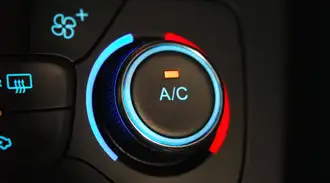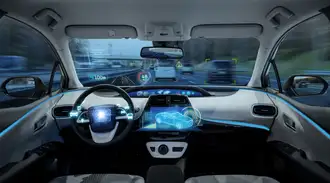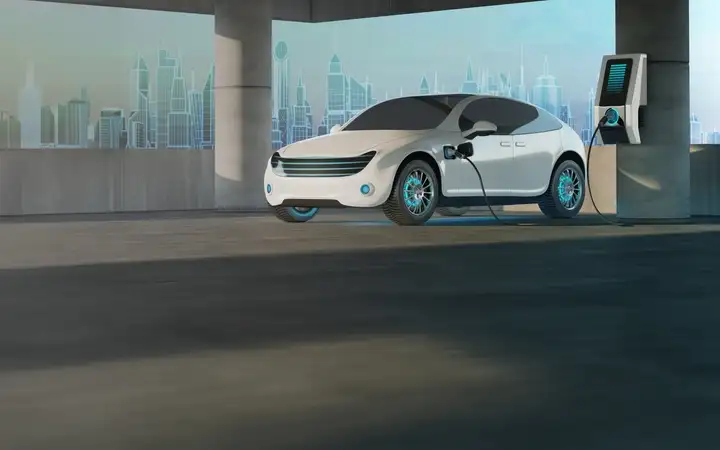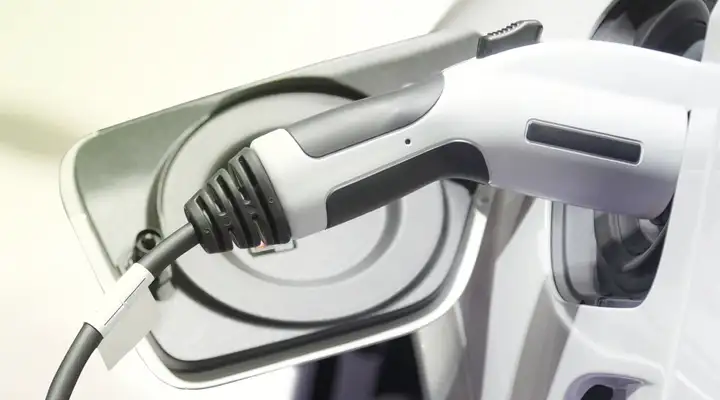
E-mobility
Technology trends of electric vehicles systems
Electric vehicle technology is advancing rapidly in several key areas. At the center of many of these advances is the battery, where innovations like solid-state technology and advanced thermal management systems are boosting energy density, safety, and performance. Furthermore, EVs are increasingly intelligent, employing sophisticated safety and driver-assistance systems (ADAS) that use a suite of sensors to enable autonomous driving capabilities.
Electric vehicle challenges and the solutions driving progress
In comparison to conventional automobiles, new energy vehicles are confronted with a set of distinct challenges. Click on the vehicle models below to explore Schott's products and solutions for various EV systems.


Lithium-ion battery
In electric vehicles, electrolyte leakage and moisture intrusion are key factors in diminished performance of lithium-ion batteries. SCHOTT battery lids seamlessly connect to the battery housing to prevent leakage. These rugged lids provide a fully sealed, non-aging, and space-saving construction that lasts up to 25 years and a temperature range of -60~+150 °C. We also offer SEFUSE® D6 battery fuses to improve battery endurance.

Solid state battery
Solid-state batteries use a solid electrolyte, rather than liquid electrolytes, to conduct ions between the electrodes. The non-flammable solid electrolyte improve safety while enhancing energy density and fast charging performance.
SCHOTT’s glass ceramic powder is a high-performance solid electrolyte material. The material’s crystalline structure acts as an ionic conductor while the amorphous glass phase improves sintering characteristics and helps reduce interface resistance.
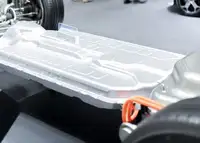
Immersed cooling systems
In immersed cooling systems, battery cells are placed in direct contact with a cooling liquid such as water-glycol to absorb and transfer heat efficiently. SCHOTT’s glass-to-metal sealed connectors deliver reliable connectivity by preventing cooling liquid leakage while enabling reliable signal transmission. These connectors are robust even in harsh environments, such as those found in ultrafast charging.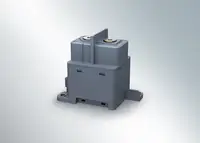
The high voltage direct current (HVDC) relay
An HVDC relay is typically located between the battery pack and power electronics, such as the inverter and motor drive. This relay is crucial for safely connecting and disconnecting the high-voltage battery from the rest of the vehicle’s electrical system. As a key safety device, an HVDC relay needs to be resistant to high voltage, load, shock, strong arc extinguishing, and breaking capacity. SCHOTT’s gas-tight terminals ensure a long lifespan for gas-filled relays.
E-compressor
As fast-charging technology becomes more common, drive batteries often operate above 500 V, with some OEMs pushing voltages up to 800 V. These high voltages place very high demands on the electrical insulation of EV compressors terminals in the air conditioning system. Drawing on over 60 years of experience in the refrigeration industry, SCHOTT developed CompRite™ Compressor Terminals for 800 V systems. These terminals are designed to withstand various refrigerants, including R134a, R1234yf, and R744 (CO₂).
Automotive sensors
Sensors play a crucial role in EV thermal management systems. Temperature sensors help regulate the heating, ventilation, and air conditioning (HVAC) systems, ensuring passenger comfort without excessively draining the battery. Pressure sensors are used to monitor and control the refrigerant cycle to ensure efficient cooling and heating. SCHOTT’s hermetic packaging enables reliable protection and functionality of sensor electronics in e-mobility.

Circuit breakers
In electric vehicles, circuit breakers protect the electrical system by interrupting the flow of electricity during an overcurrent or short circuit. They can also isolate specific sections of the electrical system for maintenance or in the event of a fault. SCHOTT’s feedthroughs support the reliable, long-term functionality of safety shutdown systems.
Passenger airbags
The airbags remain a vital safety system for electric vehicles. The airbag system must be able to detect battery-related hazards and coordinate appropriate safety responses to protect occupants. As a result, the location and number of airbags in electric vehicles differ from those of combustion engine vehicles. SCHOTT headers and feedthroughs protect the sensitive pyrotechnic ignitor charge so that it can do its job reliably in the event of an emergency.

LiDAR
LiDAR is one of the most important technologies for autonomous driving. Although LiDAR sensors must be extremely precise, they are typically installed on the outside of vehicles where they are exposed to harsh conditions. SCHOTT hermetic packages protect components in LiDAR sensors from shock, vibration, and internal condensation. With our professional opto-electrical design, these packages enable LiDAR sensors with outstanding technical performance.Batteries and opto-electronics in electric vehicles
The batteries in electric vehicles (EVs) face challenges such as safety, limited energy density, long charging times etc. Addressing these issues is crucial for improving EV performance and adoption.
Thermal management in electric vehicles
Thermal management in electric vehicles (EVs) faces challenges such as managing heat from battery packs, ensuring efficiency in extreme temperatures, and integrating compact, cost-effective systems without compromising performance. Advanced design technologies are essential to address these issues and ensure safety and efficiency.
Why e-mobility customers choose SCHOTT




